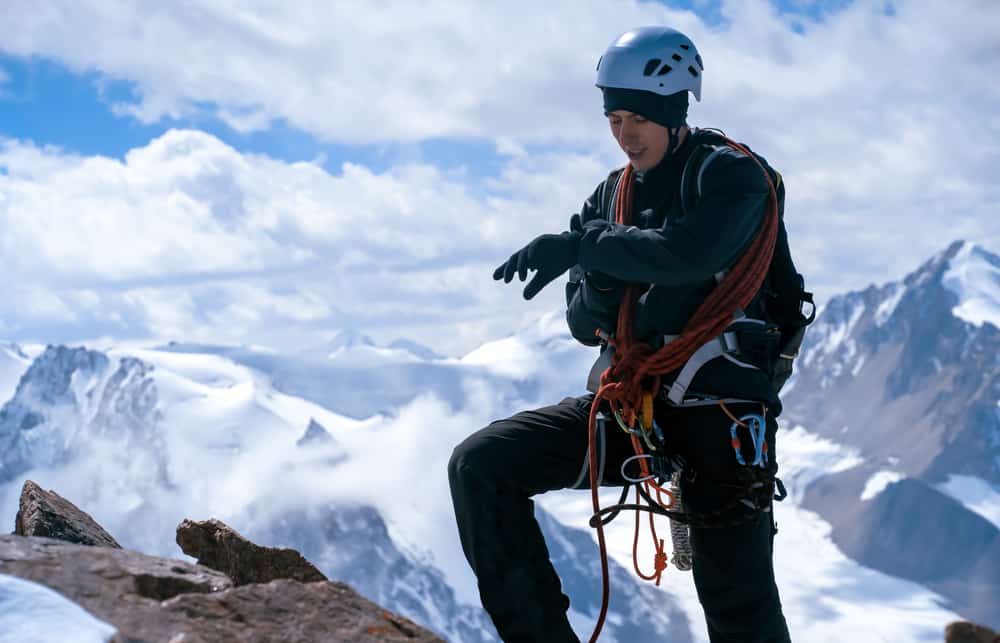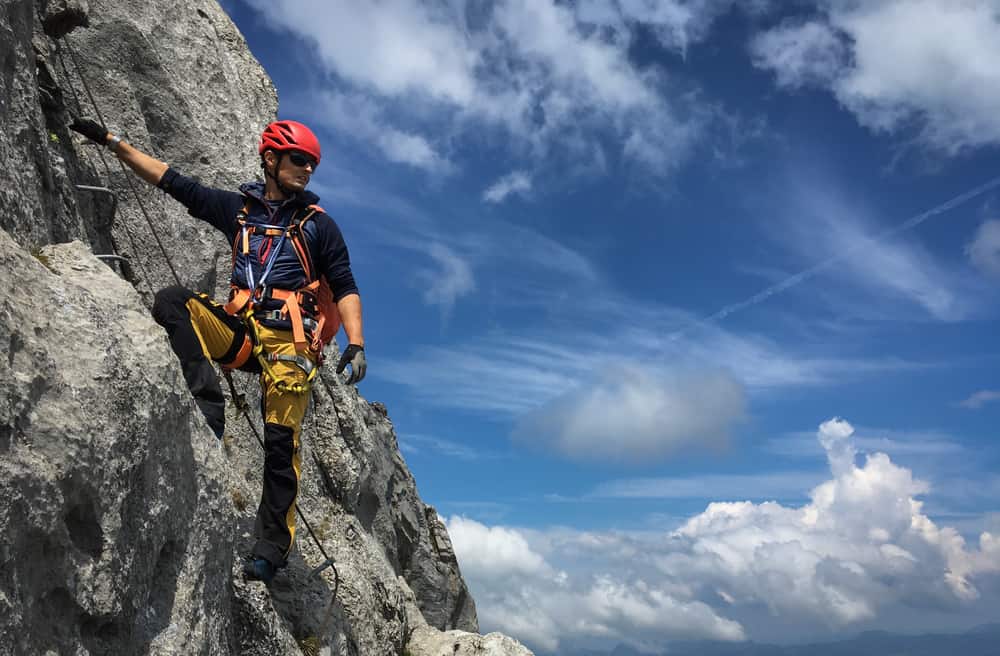Traditional climbing gear is used to ascend complex rock faces. The gear involves using protection devices to secure oneself to the rock and mounting using ropes and other equipment. The protection devices are clipped onto cracks or other geological features.
Traditional climbing gear is a vital part of the sport of traditional climbing. It allows climbers to ascend challenging routes safely. Without this gear, traditional climbing would not be possible.

Traditional climbing gear includes protection devices that are placed into cracks or other rock features and clipped into the rope system. This allows climbers to ascend challenging routes with a relatively low risk of injury.
Table of Contents
What Are the Different Types of Trad Gear?
Trad gear secures climbers to the rock and creates anchors. Without these tools, climbing would be dangerous. To climb safely, you must know how to use all your gear.

Cams, nuts, and slings are standard trad gear. Cams are expandable devices put into rock fissures to hold climbers. Nuts are also used to anchor fissures. Slings are webbing loops that tie equipment to climbers or construct anchor points.
Each piece of trad gear has its specific purpose and function. It’s essential to know how to use all the different equipment types to climb safely and effectively. Trad climbing is a terrific opportunity to challenge yourself physically and emotionally while exploring the outdoors.
How Do I Know What Type of Trad Gear to Use?
The importance of knowing what type of trad gear to use can’t be overemphasized. Different devices are suited for other purposes, and selecting the right gear for the job is crucial. With faulty equipment, you could find yourself in a dangerous situation.

The first step is to understand the different types of devices available. There are various other pieces of trad gear, each with its unique function.
Here are just a few of the most common pieces:
- Cams: Cams is one of the essential pieces of trad gear. They’re essentially spring-loaded wedges that fit into cracks to provide stability.
- Nuts: Nuts are small metal discs that fit into constrictions in the rock to provide stability.
- Hooks: Hooks are used to hook onto features in the rock and provide support.
Once you know what each type of device does, you need to decide which situation you’re climbing. There are three main categories of trad climbs: easy, moderate, and challenging. Each type requires a different set of gear.
How Do I Set Up My Trad Gear for a Climb?
Trad gear setup is crucial. This assures climbing safety and prevents mishaps. Learn how to use different gear kinds. Anchor each piece. Before climbing, double-check your gear.

Trad gear has several different uses. Cams, nuts, hexes, and tricams are standard gears. Cams expand to support a climber’s weight. Nuts are stuck in crevices. Hexes help wide cracks. Tricams are chocks inserted in apertures.
Use proper technique when building trad gear. Start by choosing the correct equipment for the crack. Test the gear’s positioning by pulling on it. Use a camming device or nut tool to secure the bag. Before continuing forward, secure the load.
Use webbing or cordage to anchor your trad gear. Webbing is more robust and less fray-prone than cordage. Choose a material long enough to reach from the climb’s base to where you’ll belay. To anchor gear, tie webbing or cordage around it and run the other end through a harness loop.
How Do I Clean My Trad Gear?
Keeping your trad gear clean is essential for a few reasons. First, it can become damaged and unusable if you don’t clean your equipment correctly. Second, if you’re climbing in a dirty environment, your gear can pick up dirt and other particles that can damage it over time.

Cleaning your gear may seem daunting, but it’s pretty easy once you know how to do it. In this article, we’ll walk you through taking apart your trad gear and cleaning each piece. Let’s get started!
First, disassemble your trad gear. This doesn’t seem very easy, but it’s not. How-to:
- Remove the cams from the camming devices.
- Unscrew the nuts from the bolts.
- Remove the bolts from the pieces of gear.
- Separate the pieces of gear.
- Cleaning Each Piece of Gear
After disassembling your gear, clean each piece. How-to:
- Wipe down the outside of each piece of gear with a damp cloth.
- Use a toothbrush to scrub off any dirt or debris inside the cracks and crevices of each piece of gear.
- Soak each piece of gear in a bowl of warm water mixed with dish soap.
- Let each piece soak for a few minutes before rinsing it with cold water.
- Dry off each piece of gear with a towel.
After cleaning, reassemble your gear. How-to:
- Insert the bolts into the holes in the pieces of gear. Please ensure the bolts are tight enough, so they don’t lose over time.
- Screw the nuts onto the bolts until they’re tight enough to securely hold the pieces of gear together.
- Insert the cams into the camming devices. Ensure the cams are inserted correctly so they don’t lose over time.
What Are the Benefits of Trad Climbing?
Trad climbing demands more skill and judgment than utilizing the pre-placed gear. Trad climbing becomes increasingly challenging and rewarding. It teaches climbers self-sufficiency because they must put and remove their equipment.
Despite being more dangerous, trad climbing is more gratifying. Correctly placing and removing gear involves skill and judgment. As climbers must put and pull their equipment, it teaches them independence.
Overall, trad climbing is a more challenging and rewarding form of climbing that teaches climbers how to be more self-sufficient. While it is more dangerous than sport climbing, the rewards outweigh the risks for many climbers.


